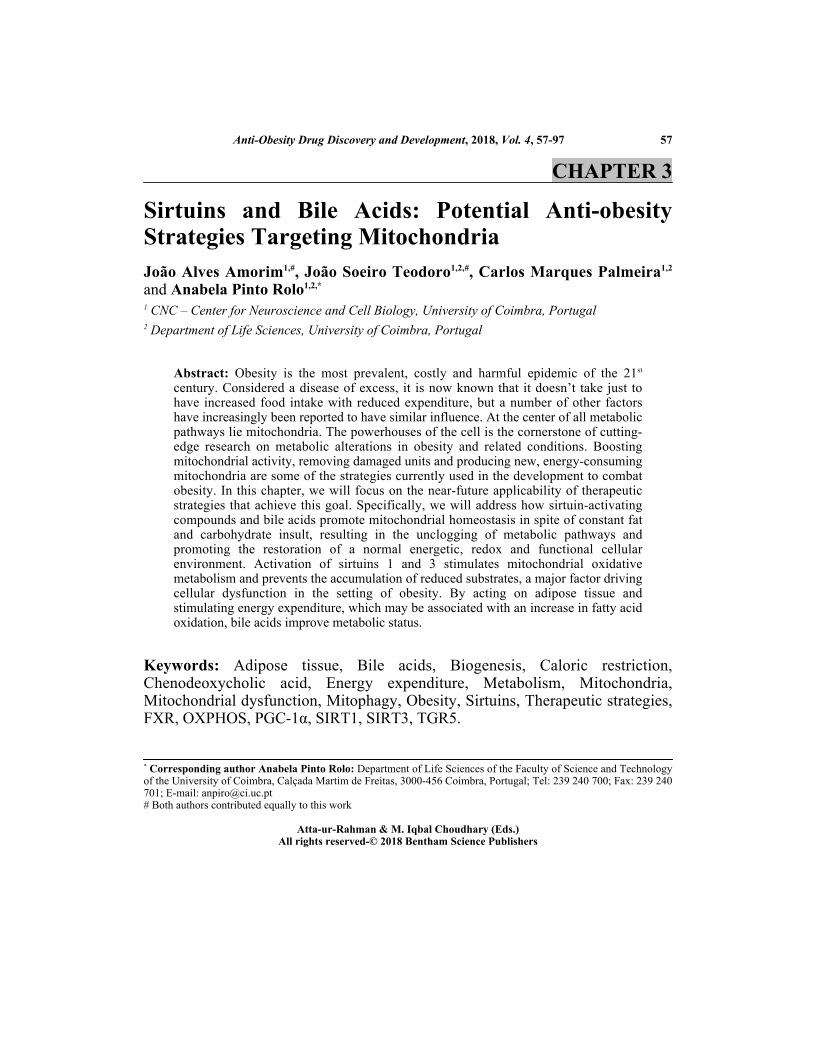Sirtuins and Bile Acids: Potential Anti-obesity Strategies Targeting Mitochondria

- Authors: Joao Alves Amorim1, Joao Soeiro Teodoro2, Carlos Marques Palmeira3, Anabela Pinto Rolo4
-
View Affiliations Hide Affiliations1 CNC – Center for Neuroscience and Cell Biology, University of Coimbra, Portugal 2 Department of Life Sciences, University of Coimbra, Portugal 3 CNC – Center for Neuroscience and Cell Biology, University of Coimbra, Portugal 4 Department of Life Sciences, University of Coimbra, Portugal.
- Source: Anti-Obesity Drug Discovery and Development: Volume 4 , pp 57-97
- Publication Date: December 2018
- Language: English
Sirtuins and Bile Acids: Potential Anti-obesity Strategies Targeting Mitochondria, Page 1 of 1
< Previous page | Next page > /docserver/preview/fulltext/9781681085586/chapter-3-1.gif
Obesity is the most prevalent, costly and harmful epidemic of the 21st century. Considered a disease of excess, it is now known that it doesnt take just to have increased food intake with reduced expenditure, but a number of other factors have increasingly been reported to have similar influence. At the center of all metabolic pathways lie mitochondria. The powerhouses of the cell is the cornerstone of cuttingedge research on metabolic alterations in obesity and related conditions. Boosting mitochondrial activity, removing damaged units and producing new, energy-consuming mitochondria are some of the strategies currently used in the development to combat obesity. In this chapter, we will focus on the near-future applicability of therapeutic strategies that achieve this goal. Specifically, we will address how sirtuin-activating compounds and bile acids promote mitochondrial homeostasis in spite of constant fat and carbohydrate insult, resulting in the unclogging of metabolic pathways and promoting the restoration of a normal energetic, redox and functional cellular environment. Activation of sirtuins 1 and 3 stimulates mitochondrial oxidative metabolism and prevents the accumulation of reduced substrates, a major factor driving cellular dysfunction in the setting of obesity. By acting on adipose tissue and stimulating energy expenditure, which may be associated with an increase in fatty acid oxidation, bile acids improve metabolic status.
-
From This Site
/content/books/9781681085586.chapter-3dcterms_subject,pub_keyword-contentType:Journal -contentType:Figure -contentType:Table -contentType:SupplementaryData105

